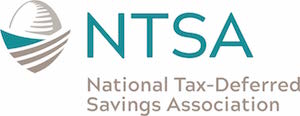 The inaugural ERISA 403(b) conference heard further about the complications of ‘legacy’ investments, so common from the past in 403(b) plans.
The inaugural ERISA 403(b) conference heard further about the complications of ‘legacy’ investments, so common from the past in 403(b) plans.
In the Oct. 3 session “403(b) Legacy Investments: The Bad, The Expensive, and The Ugly,” an expert panel explored the operational challenges of legacy investments and the tools for complying with fiduciary duties when reviewing products and contracts that may never have been “ERISA-ready.”
The panel included:
- Brian Giles, Regional VP & Practice Leader – Tax-Exempt Markets, OneAmerica Retirement Services
- David Hinderstein, RIA, Regional Senior Vice President, OneDigital
- Brodie Wood, Senior Vice President, Voya Financial
Recall with us that investment product formats in 403(b) plans are generally limited to mutual funds, CITs and insurance products. Often — decades ago — the simple approach to retirement plan investment and administration was to use individual insurance contracts. These products often also came with cumulative distribution fees based on time invested, thus handcuffing timely investment change based on market and participant sensitivities.
Many 403(b) plans have these older contracts in their plan investments, often with providers no longer available to new plan entrants with restrictions from receiving contract exchanges.
Costs
Costs are an issue, but so is performance. The ultimate measurement is the risk attendant to net-net performance, and keeping the plan in compliance regarding fee exposure and information sharing is key. An important question for incumbent parties in this regard is what resources they will bring to bear.
Decisionmaking
Sponsors of 403(b) plans tend to be loyal and take a long time to make decisions. However, to take advantage of this longer, thoughtful process is to be negligent in the universal standard of care responsibilities. The conundrum: plan sponsors are the fiduciary for all assets of the plan, including individual and group contracts of the past; being responsible for what you cannot control is an impossible situation.
Legacy investments may have older mortality tables and higher annuity rates; however, at the same time, they lack flexibility, for obvious reasons on the part of the product purveyor.
Consolidation
From a plan perspective, consolidation of providers is a goal, so often freezing certain assets with no future contributions is part of the action plan. Bidding out to a new group annuity with lower costs and with an education process is one option of many; terminating the plan comes with its own issues of vesting, leakage, loan issues, etc.
Reviewing RFPs with the same assumptions is critical moving forward, having mappable assets being an advantage in the needed education program for a successful transition.
Importance of Advice
From a participant standpoint, lack of independent advice with no active tools for asset allocation, yet priced at retail, with no price breaks as valuation mounts, is a significant issue. As for plan sponsors, competent advisors facilitate qualified negotiation with various prior and potential parties, with full fee exposure and information sharing.
Finally, having experienced, high level legal and investment advice is critical to maneuvering these complicated waters, as plan sponsors and participants alike look for an understandably communicated plan with fiduciary-driven, personalized investment results.
Bottom line, said the panel, is that what is needed is independent, qualified advisors to help evaluate the facts and circumstances of the past, present and future situations.
Kristine J. Coffey, CPC, CPFA, CRES; member, ASPPA, NTSA, NAPA, was 2019 NTSA President.
- Log in to post comments
